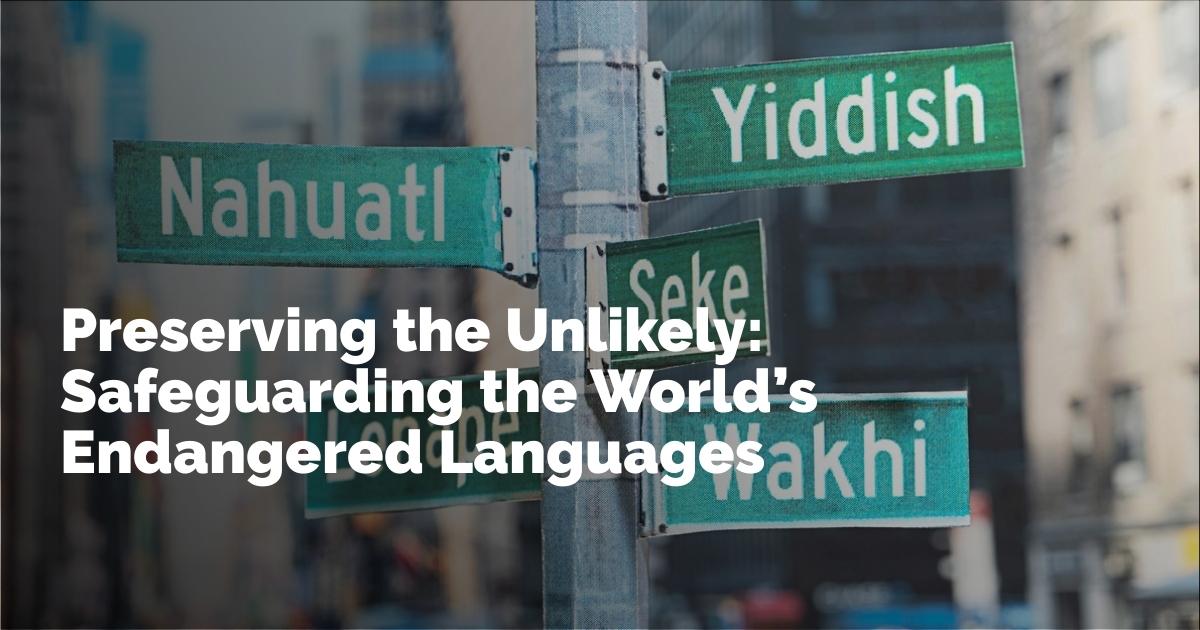The Last Refuge: Endangered Languages in New York City
New York City, a bustling metropolis known for its towering skyscrapers and vibrant art scene, holds another, often overlooked distinction: deep linguistic diversity. Especially in Queens, New York, the sheer number of languages spoken is staggering. This linguistic tapestry not only represents the city's multicultural essence but also serves as a bastion for endangered languages facing extinction elsewhere.
A Melting Pot of Tongues
In Queens, every street tells a story of migration and adaptation. Walking down any block, you'll hear a symphony of languages: Polish, Ukrainian, various dialects of Spanish (Mexican, Puerto Rican, Dominican, and Ecuadorian), Egyptian Arabic, and more. These languages, alongside the distinctive forms of New York City English, form the neighborhood's auditory landscape.
Like many immigrant-rich areas within New York's outer boroughs, hundreds of language groups have cultivated thriving communities. For instance, Seke, a language with only 700 speakers from Nepal, can be heard within a subway ride's reach. Meanwhile, other Eastern European languages are alive in small interactions, reminiscent of life in the former Yugoslavia.
Queens does not afford any language a majoritarian status. With no single ethnic group dominating, the area embodies a sort of linguistic democracy where English functions as a bridge, rather than a silencing force—the ecological balance of diversity and integration.
Cultural Clubs: Bastions of Heritage
In these neighborhoods, cultural community clubs provide havens for endangered languages. Club Trentino is one such place where elderly women engage in tentative conversations in Nones, a Romance language with connections to Ladin, Lombard, and Venetian.
Similarly, Gottscheer Hall serves as a focal point for the Gottscheer community, preserving Gottscheerish—an endangered Germanic language developed in isolation. This hall, while versatile enough to host local events from quinceañeras to house-music parties, remains the heart of Gottscheer culture, maintaining their unique linguistic identity against the tides of assimilation.
Recording the Languages
Queens' linguistic diversity is not just a curiosity; it's a vital asset to be documented and cherished. The Endangered Language Alliance (ELA), a non-profit organization, has recorded more than 700 languages spoken within New York City, including many that official data barely acknowledges. This historical record demonstrates New York City's role as an improbable sanctuary for languages marginalized and suppressed elsewhere.
The richness of linguistic diversity in New York contributes to its vibrant culture, economy, and unique brand of multiculturalism. Languages that might seem exotic in other parts of the country compose New York's soul, fostering an environment predisposed to tolerance and inclusion.
The Challenges to Linguistic Diversity
Despite its diversity, New York City is not immune to the threats facing minority languages. Historically, dominant cultures have attempted to stamp out those of the marginalized, and in a globalized world, this trend persists. Languages today are not dying of natural evolution but are often driven out by external pressures.
Immigrant languages struggle to persist beyond the third generation, confronted by immigration restrictions and urban gentrification. More and more, smaller languages must find ways to survive within urban environments if they are to endure at all.
An Underestimated Heritage
The U.S. Census, addressing language since 1890, has failed to capture the full scope of linguistic realities due to its limitations. Indigenous and primarily oral languages remain undercounted and undervalued. Yet ELA's count suggests that a staggering tenth of the world's languages have representation in New York, from all corners of the globe—Asia, Africa, Europe, the Americas, Oceania, and the Pacific.
The underappreciated linguistic wealth of New York holds immense practical importance. Bilingual education facilitates better learning outcomes for children, while strong native language retention relates to positive mental and physical health outcomes. The knowledge encapsulated in these languages enriches our understanding of human expression and communication.
New Yorkers: The World in Microcosm
The typical New Yorker is a multilingual immigrant, a testament to the city's historic role as a gateway and melting pot. Nearly 40 percent of current residents were born overseas, sustaining a longstanding tradition of immigration. This vibrant mosaic of backgrounds and languages bolsters the largest foreign-born population of any metropolitan region globally.
Linguistic minorities frequently dominate these diaspora communities, their languages under threat back home due to conflict. It is within cities like New York that these cultural and linguistic legacies must find refuge to persist.
Imagining a Diverse Future
New York City might not be a linguistic utopia, but it offers a glimpse of an alternative future—a modern Babel, not of confusion but of coexistence. In an ideal scenario, widely spoken languages such as English, Chinese, and Spanish would enable communication without overwhelming smaller tongues. Here, languages would be celebrated and sustained within a network of mutual recognition and enrichment.
This vision may appear utopian, but New York's linguistic ecosystem suggests that with effort, such a reality is within reach. In recognizing and preserving the multitude of languages which contribute to its vibrancy, New York stands as both a testament to the richness of human culture and a call to action to honor and protect this invaluable heritage.
출처 : Original Source

